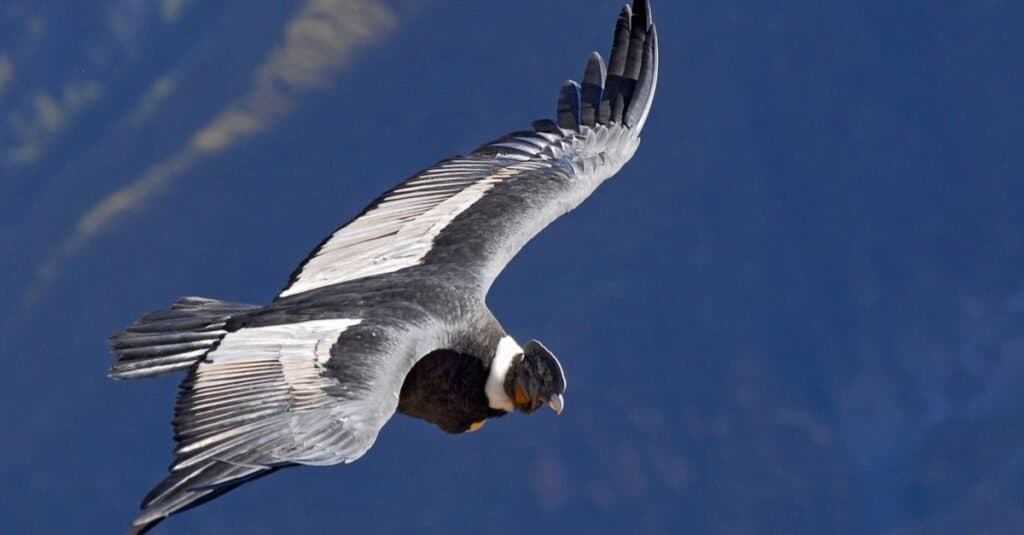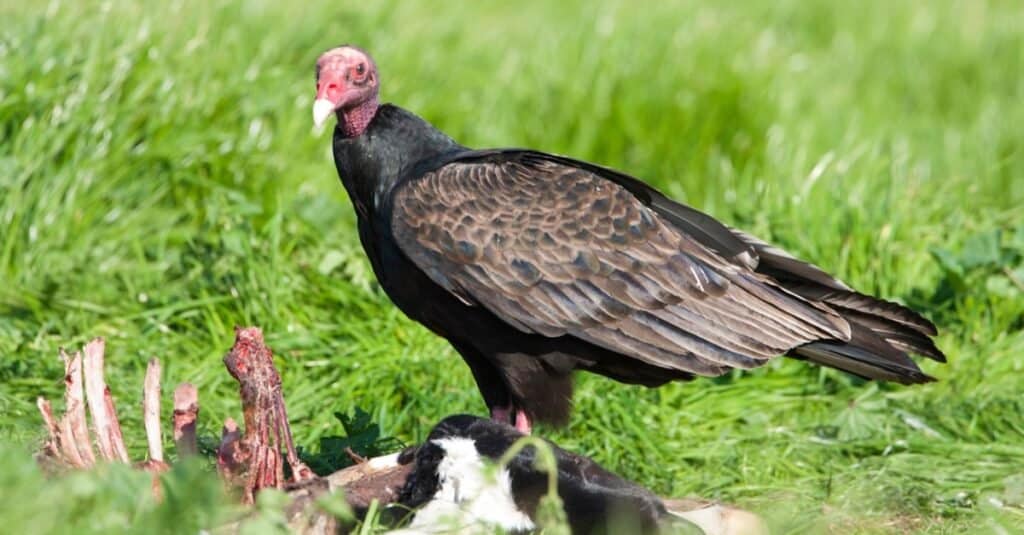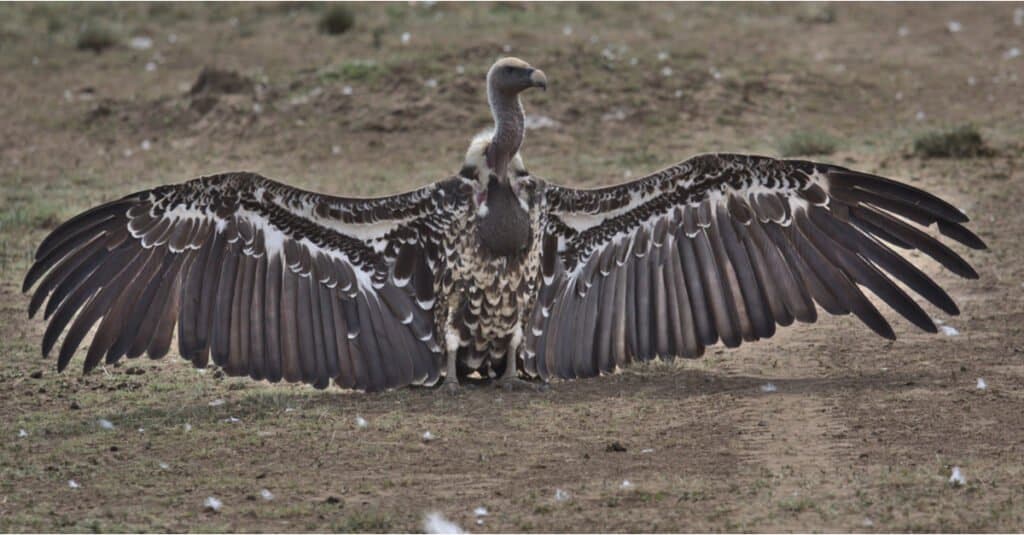Vultures, condors, buzzards – what do they all mean? The difference in names between these three has been confusing people for quite some time. Thankfully, it isn’t all that difficult to grasp once you learn a little about all these amazing birds. Today, let’s look specifically at the difference between vultures and condors. Are they different names for the same thing, or are they different species entirely? Let’s learn about these biologically essential creatures and see: vulture vs. condor – what even is the difference?
What is the difference between condors and vultures?

Condors are just a specification of two specific types of New World vultures, the Andean and California condor.
©Cezary Wojtkowski/Shutterstock.com
The main difference between condors and vultures is their size. Condors are a type of vulture, but are the largest vultures. There are only two condor species in the world, one that lives in North America and one in South America.
Understanding terminology is important here. There are a few terms that you need to know before you can understand the difference between all these names and designations. To start, the term “vulture” encompasses every Old and New World vulture species, including the condors. Old World vultures live in Africa, Europe, and Asia, while New World Vulture Species live in North and South America. Total, there are 23 species of vulture across the world, with 16 in the Old World and 7 in the New World.
Where condors come in is in the New World. Of the 7 New World vultures, there are two that are designated specifically as condors. Of all the vulture species in the world, there are two condors. Both of these condors live in the New World and are still considered vultures; they are just a subset within the global speciation. The reason there is even a distinction between Old and New World species is that they are a case of convergent evolution. Old World vultures likely came from a common ancestor with hawks and eagles, whereas New World vultures likely come from a relative of storks.
The main difference between the two condors and the rest of the New World vultures is their size. Condors aren’t just large as far as vultures go; they are some of the largest flying birds on earth.
The different species of condor

There are two species of condor, the Andean and California condor.
©MTKhaled mahmud/Shutterstock.com
There are two species of condor that live in the New World. They are both bigger than the other vultures but are still New World vultures themselves.
Andean condors are massive birds that live along the Andean mountain range on the western coast of South America. They have some of the largest wingspans in the world, topping out at 10.5 feet in some individuals, giving them the #7 position on the list of the world’s largest wingspans. They weigh up to 33 lbs, and in combination with their wingspan, they can soar for hours at a time looking for food. They live in high altitudes, eating larger carrion carcasses like alpacas, llama, and cows.
California condors are also large birds that are a part of the New World vulture family. They became extinct in the wild in 1987 when they were killed off and viewed as pests. Thankfully, wild specimens were captured and re-released later on, allowing them to become present in the wild again. They currently live in some locations in Arizona, Utah, California, and Baja, Mexico. They have a wingspan of 9.5 feet and weigh as much as 24 lbs. Although they are slightly taller than their Andean cousins, they are generally a bit smaller by wingspan and weight. California condors eat large mammals, much like the Andean condor. Common foods include deer, goats, sheep, donkeys, and any other dead material they find.
The different species of New World vulture

There are 7 different types of New World vultures in North and South America.
©Agami Photo Agency/Shutterstock.com
Since New World and Old World vultures are taxonomically different, we are only going to cover one of them. Condors are a part of the New World vulture classification, so let’s look at them specifically. Since we already covered two of them (the two condors), we will exclude them here.
Black vultures live in North and South America, migrating south as the weather gets colder. They are commonly seen, and as their name suggests, they are black with featherless black heads. They have wingspans reaching lengths of 5 feet and can weigh as much as 4.3 lbs.
Turkey vultures have the widest range of any New World vulture. They have red heads and necks with dark brown feathers, hence their reference to turkeys. Their wingspans reach 6 feet long, and they can weigh as much as 3 lbs.
Yellow-headed vultures live in South America and are split into two distinct groups: lesser and greater yellow-headed vultures. They are the smallest of the New World vultures, and the smaller of the two generally have a wingspan of less than 5 feet. The larger of the two can have wingspans of up to 6 feet.
Finally, we have the king vulture. King vultures are white and black with brightly colored heads. Their heads are purple, red, blue, and orange, making them easily identifiable. King vultures are the largest New World vultures outside of the condors. They have wingspans that can reach 7 feet, and they weigh up to 10 lbs. They have strong beaks that the yellow-headed vultures rely on since they can rip open tough hide.
Where do vultures and condors live?

There are 7 species of vultures in North and South America and 16 species of vulture in
Africa
, Asia, and Europe.
©nshah86/Shutterstock.com
New World vultures and condors live in North and South America. Andean and California condors live along the Andean mountains and in the Southwest United States, respectively. Black and turkey vultures live in North America and most of the way through South America, stopping a bit shore of the southern shore. Yellow-headed and king vultures share similar ranges, mostly living in South America down through Uraguay.
Old World vultures (of which there are 16) live in various locations across Europe, Africa, and Asia. The most commonly depicted Old World vulture is the white-backed vulture that lives in Africa. For reference, they are the ones seen in The Lion King when Simba is a cub.
Do vultures and condors eat carrion?
While condors are larger and resemble predators, they eat carrion, just like the other species of vultures across the world. All vulture species prefer carrion that has been dead for 2-3 days, so it’s soft enough to tear but isn’t rotten. All vultures have strong stomach acid and special gut biomes that allow them to eat and digest this material without any adverse effects.
The photo featured at the top of this post is © Pascal De Munck/Shutterstock.com
Thank you for reading! Have some feedback for us? Contact the AZ Animals editorial team.






